2022 graduates excel in career outcomes report
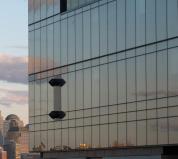 BY BENJAMIN KNOBLOCH, NEWS EDITOR
BY BENJAMIN KNOBLOCH, NEWS EDITOR
The venues and schedule for the 2023 Stevens Innovation Expo, the annual showcase of research, design, and entrepreneurship spanning all University schools and disciplines, have been announced.
This year’s Expo, which will take place on Friday, April 28, will be the first one to feature the new University Center Complex as
a venue since it opened last spring. According to the full schedule, most of the day will be centered around the Babbio Center, Canavan Arena, and UCC Tech Flex Auditorium.
The day will begin at 9:30 a.m. with a continental breakfast spread in the Babbio Center Atrium. Following the breakfast will be a 15-minute ceremonial welcome to the Expo, which will lead to the first events of the day.
Returning features in-


clude the Gallois Autonomous Robot Competition, the Thomas H. Scholl Lecture by Visiting Entrepreneurs, and the Ansary Entrepreneurship Competition. The College of Arts and Letters Concert, a new addition to last year’s show, is also back after receiving highly positive feedback, according to Stevens.
The Thomas H. Scholl Lecture by Visiting Entrepreneurs will take place in
SEE 2023 PAGE 2
BY EVAN PAPAGEORGE, STAFF WRITERWhen applying to Stevens, many potential students often see the great statistics of being a student here: great professor-to-student ratios, internship opportunities, research facilities, and more. However, from statistics to fancy graphics, perhaps the most attractive information for incom-
WELLNESS AND SAFETY IN HOBOKEN
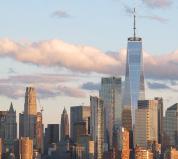 BY QUENTIN JIMENEZ, SCIENCE WRITER
BY QUENTIN JIMENEZ, SCIENCE WRITER
Hoboken’s water issue outlines greater infrastructure problems

Norovirus surges through Stevens and Hoboken
A new variant of the flu has been floating around campus, leaving many Stevens students wondering if they will be next to catch the so-called “winter puking virus.” More accurately referred to as the Norovirus. This stomach bug spreads quickly and easily, leaving many of its victims curled up in bed or over the side of a trashcan or toilet. Symptoms often include excessive vomiting and diarrhea, sometimes coupled with a loss of appetite, a fever, or chills. While symptoms only last upwards of a few days, the effects can be excruciating, however they do not pose significant longterm health impacts like the recent COVID-19 virus.
Last week Hoboken experienced one of the worst infrastructure-related disasters in recent history. As most are aware, a contractor doing gas line work for PSE&G accidentally ruptured the water main that imports a majority of Hoboken’s water from Jersey City, disrupting water service and cutting off water access for most residents of the city. This specific issue may be unique to Hobo-
ken, but it highlights the issues with private industry and outdated infrastructure which plague cities all across America.
The biggest question on residents’ minds is the cause of the incident, how did this contractor break the water main in the first place?
Although the cause is still mostly unknown, the best theory is that while doing
A recent uptick in cases of Norovirus reported in New Jersey, and at Stevens, prompted the administration to send out an email notification to all students warning students of the virus and the best practices to avoid catching it.
To reiterate and expand upon the information they provided, Norovirus most easily spreads when one comes into contact with an
infected individual’s fecal matter. Symptoms normally onset within 12 to 48 hours after exposure, and individuals are most contagious when vomiting or having diarrhea, but can still pass the disease on upwards of two weeks after symptoms subside. It is recommended to isolate as best as possible while actively sick with Norovirus.

In order to keep yourself safe from the disease, it is recommended to actively wash your hands, especially after using a shared bathroom with someone who is sick. Alcohol-based hand sanitizers are not effective against Norovirus, but traditional soap and water work well. Since it is often transmitted through contaminated food, it is recommended to thoroughly wash food before preparation, as well as wiping down any surfaces the food comes in contact with.
If infected with the virus, the most worrying problem is dehydration, since the virus will often empty your system of fluids. The best
SEE VIRUS PAGE 2
ing students is the return on investment of a degree from Stevens. From job placement, graduate school acceptance rates, and average starting salary, Stevens offers many lucrative outcomes for graduating seniors. As it has become a yearly tradition, Stevens recently released its Undergraduate Class of 2022 Career Outcomes Report, listing salaries, graduate school acceptances, and the employers for the next
generation of Stevens graduates.
The career report is an in-depth, 23-page report that details the starting salaries, employers, and rates of students seeking jobs, with a job, and going to graduate school. Other than the holistic analysis of these statistics from the entire school, the report narrows its scope and examines each school, then each major, and also in-
SEE GRAD PAGE 3
SITTV to see more production and growth for the future
BY EMMA SPOONAUER, CONTRIBUTING REPORTER
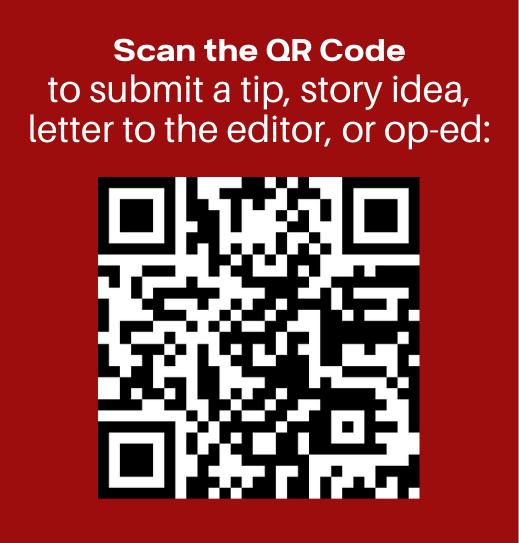
Stevens Institute of Technology Television (SITTV), the school’s audio and visual media organization, is predicted to have a very exciting year with a lot of growth in store. SITTV supports involved students and provides them with the resources to create productions of all scopes. In an interview with the president of SITTV, Lennox Kolics, The Stute found out what the organization is all about as well as what di-
rection Kolics sees the organization going in the future. SITTV is based upon being a creative outlet for members, and the most popular way students have expressed this creativity is through making productions. Kolics talked about the beginning of this process: “It all starts with an idea pitch coupled with a request — what do you want to do and what do you need to do it?” Students can share their pitch in Discord or with an executive board member to be put in contact with SITTV’s Executive Pro-
SEE SITTV PAGE 2
Masthead Volume CXX No. 20
Executive Board
EDITOR-IN-CHIEF..............................SANJANA MADHU ‘23
BUSINESS MANAGER.......................JORDYN RAMELLI ‘23
MANAGING EDITOR............................. KEENAN YATES ‘24
LAYOUT EDITOR.........................................ISABELLA ZIV ‘24
OUTREACH CHAIR KATIE BLOOMER ‘25
DIGITAL MANAGER...............................BEMIN SHAKER ‘23
SECRETARY......................................ZANE THUMMBORST ‘23
Editorial Board
NEWS EDITOR.............................................OZ AGUINAGA ‘23
NEWS EDITOR.........................................BEN KNOBLOCH ‘25
FEATURE EDITOR..................................TASHA KHOSLA ‘25
SCIENCE EDITOR.........................................ERIN MCGEE ‘25
OPINION EDITOR.................................CLAIRE HANNAN ‘24
SPORTS EDITOR........................................CHRISTA RUIZ ‘25
HEAD COPY EDITOR.....................GIANNA CALLEGARI ‘24
ASSIS. COPY EDITOR ISABELLA HAMM ‘25
ASSIS. LAYOUT EDITOR................NICOLE GIARDINO ‘25
Operations Board
HEAD PHOTOGRAPHER......................OLOF PERSSON ‘25
ASSISTANT BUS. MANAGER..........AVA BUONCUORE ‘25
SOCIAL MEDIA MANAGER............VANESSA HUERTA ‘23
Staff & Contributors
Advait Dantuluri
Ava Wang
Charles Beall
Cole Gardelia
Emma Spoonauer
Evan Papageorge
Hima Thummala
Joey Ames
Kayden Cannilla
Matthew Brantl
Mia Petrolino
Contact Us
Quentin Jimenez
Rafael Lee Li
Ruthie Mullisky
Sara Deuidicibus
Stephen Pachucki
Tanishka Kapoor
Tanya Avadia
Victoria Yashchuk
Vitek Sabath
Zoe Hack
WATER CONTINUED FROM PAGE 1
nearby repairs on a gas line, the vibration from the construction was enough to rupture the weakened water main. PSE&G claims that the blueprints in the area may have been incorrect, but the city is planning an investigation into the matter and has requested that they maintain any documents related to the disruption. In a statement from Mayor Bhalla, he said “We intend to hold PSE&G fully accountable for their actions … [and] that the city intends to collect damages incurred as a result of their apparent negligence”
While PSE&G may be responsible for the accident, a separate contractor may be liable for their negligence in their response to the water outage. Even though the city owns the infrastructure, Hoboken contracts Veolia NJ (Formerly SUEZ) as the private operator who maintains and repairs Hoboken’s water system. During the course of repairs on the water main, Veolia was responsible for monitoring the water pressure of the system, ensuring the city and residents that if it dropped below a certain threshold a boil advisory would be instated. Although Veolia had provided assurances the water was safe to drink, they were not actively monitoring the pressure data for the system. Since the city is legally obligated to listen to Veolia’s advice
SITTV
CONTINUED FROM PAGE 1
before issuing an advisory, one was not issued until several days after the initial incident, at the fault and negligence of Veolia. In the same statement, the mayor stated that similar actions are being taken towards Veolia as with PSE&G in terms of accountability.
Although this is just another in a long list of recent issues with Hoboken’s water system, every outage leaves residents wondering why the system is so fragile and if anything is being done to improve it. The main cause of the constant ruptures is to do with the age of the system and the materials it was built with.
Some of the piping in the city is almost 100 years old and built mostly out of cast iron. Because the material is so old, it has begun to degrade and become incredibly brittle, allowing vibrations from nearby construction to easily crack a pipe. However, in recent years Hoboken has made significant strides toward improving the water system, replacing a significant amount of old piping all around the city. Though progress is steady, there is still a large amount of construction to be completed, only five percent has been upgraded in the past two decades, but it is expected to reach 18% by 2034. This lack of progress is mainly due to funding, as the city is not able to afford the expensive price tag of a complete system rework.
These Hoboken-specific issues help to emphasize the larger problem with American infrastructure.
Kolics describes the experience:
Corrections
Disclaimer
All opinions and editorials reflect the views of their respective author(s). No Part of The Stute may be reproduced in any form, in whole or in part, without the written consent of the Editor-in-Chief. Cited references of The Stute are permitted.
Policy on Letters to the Editor
All members of the Stevens community are able to submit a Letter to the Editor to be published in The Stute. Letters must refer either to a piece published in The Stute or to The Stute in general and must be between 400 – 800 words in length. Submit letters to editor@thestute.com with your name and title (when applicable) or using our Google form. For writers who wish to write a Letter to the Editor anonymously, please see our policy on anonymity.
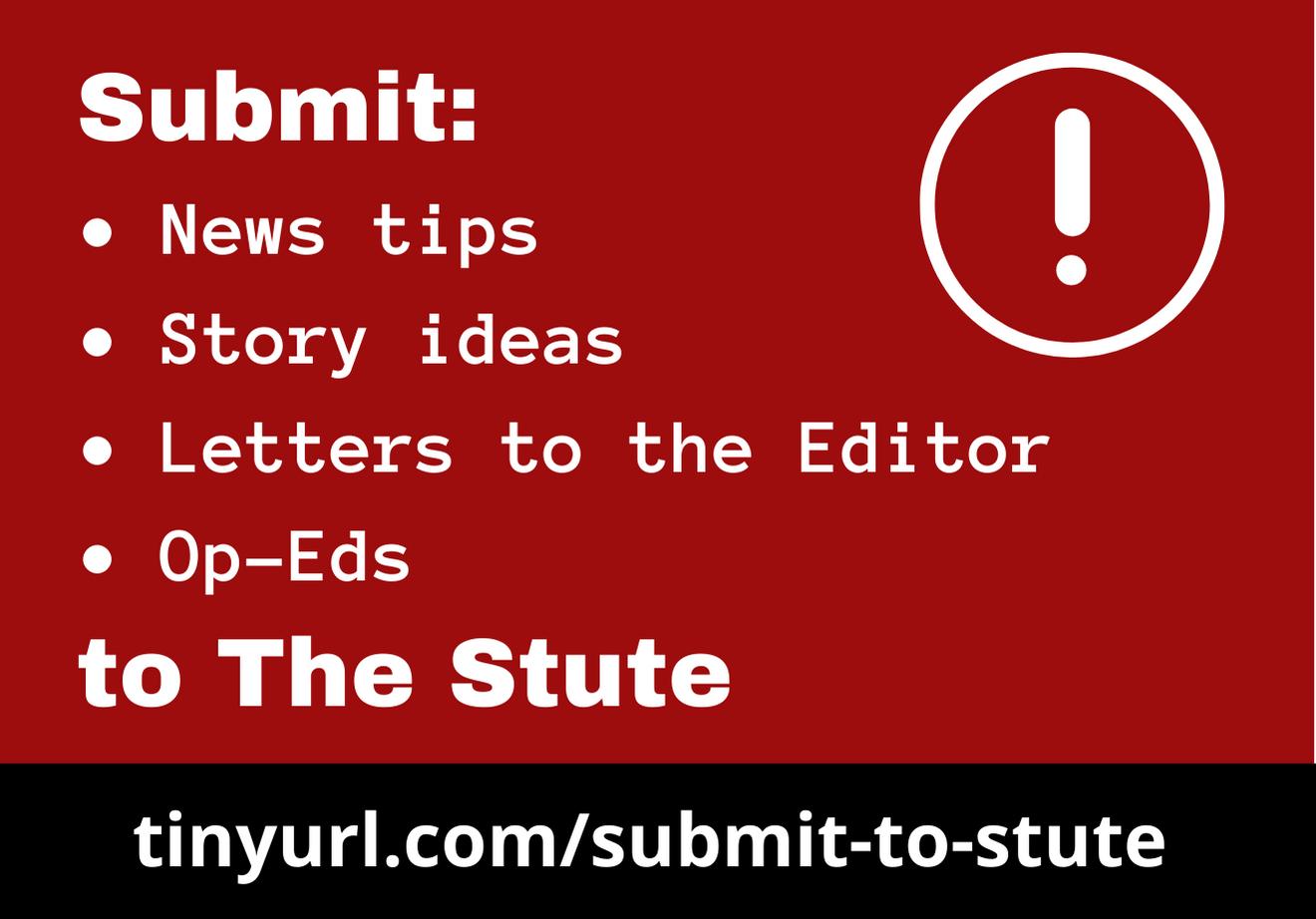
The Editorial Board reserves the right to choose whether or not to publish a submitted Letter to the Editor based on a majority rule vote, and additionally reserves the right to edit letters for clarity or request authors to revise. Provided that the author approves the final version, The Stute reserves the right to edit letters according to our copy editing procedures, defined in our policies.
Policy on Op-Eds
All members of the Stevens community are able to submit a standalone opinion piece (otherwise known as an Op-Ed) to be published in The Stute. Op-Eds must be between 400 – 800 words, but longer submissions will be considered on a case-by-case basis. To submit an OpEd please email eboard@thestute.com with your name and title (when applicable) or using our Google form (tinyurl.com/submit-t0-stute). For writers who wish to write an Op-Ed anonymously, please see our policy on anonymity.
The Editorial Board reserves the right to choose whether or not to publish a submitted Op-Ed based on a majority rule vote, and additionally reserves the right to edit Op-Eds for clarity or request authors to revise. Provided that the author approves the final version, The Stute reserves the right to edit Op-Eds according to our copy editing procedures, defined in our policies.
ducer, Matt Pino. For students who don’t already have a group of people wanting to work with them on the production, Pino “will help you put together the team you need, including videographers, actors, editors, co-writers, etc.” Once you get the official approval from Pino, you can schedule time in the studio dedicated to filming and editing as well as schedule when you need certain equipment with the Equipment Manager, Tom Boccassini. Creating a production can be an overwhelming process, but Kolics stresses that “The eBoard is always here to help flesh out ideas and advise you in all aspects of pre-production, production, and post-production.”
For non-members, SITTV still wants to share its members’ love for films by hosting movie nights. Kolics remarks, “our studio is just as great for showing [movies] as it is for making them.” The organization hosts movie nights on most Fridays at 6 p.m., and the schedule for the rest of the semester is listed below.
• Soul, March 24
• E.T. the Extra-Terrestrial, March 31
Turning Red, April 14
• Cloudy With A Chance of Meatballs, April 28
2023
CONTINUED FROM PAGE 1
Babbio Center Room 122 from 10:15 to 11:15 a.m. The lecture series is a long-running staple of the Innovation Expo that features talks on diverse topics by distinguished entrepreneurs and executives, most of whom are Stevens alumni. Speakers in the last few years have included Fortune 100 CEO Ann Fandozzi of the class of 1993, internet pioneer and mobile technologies expert Bill Barhydt of the class of 1990, and medical venture capital executive John Nehra. Following the lecture will be the College of Arts and Letter Concert, which is styled this year as “A Celebration of Seniors Live Concert,” starting at 11:30 a.m. and lasting until 12:30 p.m. The concert will
VIRUS
CONTINUED FROM PAGE 1
practice is to continuously sip water or a drink with electrolytes to keep your body hydrated, even if it won’t stay down. You can slowly begin to introduce solids as your
Hoboken is not the only city with significant water problems, almost every other major city relies on similarly outdated systems to provide clean water to residents. On average, a water main ruptures every two minutes somewhere in the country, and billions of gallons of clean water are lost daily to leaky pipes. While our systems decay, federal funding for water utilities has plummeted in recent years, leaving municipalities unable to afford the skyrocketing price of repairs. This comes as climate change is accelerating the issue, causing more pipes to freeze or rupture while also increasing the stress and demand on these systems.
And water isn’t the only piece of infrastructure affected or under threat. The same issues that plague this system: age, materials, and a lack of funding, are threatening every other piece of American infrastructure, from bridges and roads to energy and rails. We have witnessed all of these issues explode in the past few years, from climate-related power outages in Texas to a completely unregulated rail industry in Ohio, power companies increasing prices during emergencies, and bridges collapsing at an increasing rate. Without powerful regulations to keep businesses accountable, and without the proper funding to ensure our systems are properly maintained, our bridges will continue to collapse and greedy parasites will continue to leech off of our crumbling society.
“It’s pitch black except for the projector screen and glow-in-the-dark tape on the ground, we’ve got gamer chairs, and there’s popcorn.” No matter the group’s consensus on the movie, members have fun talking about it afterward and learning more about its production. Specifically, the SITTV president reminisces about how after he showed the movie “Gremlins,” they decided to also watch the Director’s Commentary and some people stayed for an hour and a half to discuss the film.
As for SITTV’s most recent projects, SITTV is planning on bringing back film fests, which it held frequently before the COVID-19 pandemic. According to Kolic, “Everyone receives the same filmmaking prompt at the beginning of the month…and at the end of the month we screen whatever folks cooked up.” The organization currently has three film fest videos in post-production with more on the way. Kolics shared his excitement: “I’m absolutely pumped about our film fests because we’re all just hanging out making things now.” They also want to reassure students who don’t have an idea themselves, since other students who do have ideas are always looking for help on their own projects. The project “SITTV News,” in collaboration with The Stute, is also starting back up.
Looking ahead, Kolics discusses
feature performances from senior undergraduate acts.
Tying in with the Ansary Entrepreneurship Competition, senior projects will be on display from noon to 12:45 p.m. in various venues across campus according to school. The competition will then take place from 3:00 to 4:30 p.m. in DeBaun Auditorium.
Another long-running tradition of the Expo, the Ansary Entrepreneurship Competition tasks teams of senior students with framing their design projects as potential businesses and making elevator pitches for them to a panel of judges. An elevator pitch is a bid for an investor’s support short enough to be made in an elevator ride. In a series of three rounds, dozens of teams will compete and be judged until there are only three winners remaining, who will be announced on the day of the Expo. At last
appetite returns. While most cases won’t develop to this point, if you can’t keep enough fluid down to remain properly hydrated, or blood starts coming from your vomit or diarrhea, you should seek medical attention.
Winter may be almost over, but the multitude of diseases it brings
how they have grown to 15 voting members, and they do not plan to stop there. With more people, they can now create more content and “set [themselves] up to keep on this upward trajectory.” Kolic envisions SITTV becoming a “true hub” for all creative minds alike. Whether you are a writer, actor, camera enthusiast, editor, or just a film nerd in general, he wants this to be a space where you can be involved. Kolics wants Stevens to know that they exist outside of their weekly meetings and that SITTV is looking to focus more energy on its productions. Kolic reflects, “The more we do, the more SITTV becomes a place where you can contribute as much as you want in the time that works for you.”
When I asked Kolic how students can get involved, they said that they can join SITTV’s Discord, which you can find through this link: https://discord.gg/WjekjGN8V7. General Body Meetings are held on Mondays at 9 p.m. in the studio, located on the northwest side of Humphreys across from the North Building, but students can get involved without attending the meetings through productions announced on Discord. However you get involved, Kolic wants the SITTV to “enable students to create audio-visual content, whether it be artistic or documentary in nature, by providing them with the resources, community, and support they need to do so.”
year’s event, the winners received over $17,000 dollars combined for such projects as a real-time ASL translator, a novel water filtration method, and a matrix decomposition algorithm.
The day will wind to a close with a networking reception period, to be held in the Babbio Center Atrium and on the adjacent East Patio.
Stevens recommends attendees use the schedule to plan for the Expo and select events most interesting and relevant to them. The University will also be revealing more information about the Expo, including the full speaker lineup and additional unannounced venue information, in the coming weeks, so all those interested in seeing what the Expo has to offer should monitor Stevens releases, including the Expo’s page, to keep up to date.
along is still here, and Norovirus is just one of them. COVID-19 is still around, and the traditional colds are as well. In order to keep yourself safe, make sure to wash your hands regularly and thoroughly, and make sure to wear a mask if you or others around you start to not feel well.
FIRST Robotics to introduce a new generation of students to robotics with the help of student volunteers
 BY ADVAIT DANTULURI, STAFF WRITER
BY ADVAIT DANTULURI, STAFF WRITER
If you are looking for a great way to help introduce young kids and teens to robotics, you can help volunteer at FIRST.

According to “For Inspiration and Recognition of Science and Technology” (FIRST) volunteer Matt Oyales, FIRST is a youth organization that primarily uses robotics as a means of exposing young students from years K-12 to the fields of STEM. The organization was founded in 1989, and has since expanded to 110 countries and has nearly 700,000 students around the world participating. Individual events are run by smaller, regional organizations, which require the help of volunteers.
FIRST Robotics is broken up into four groups of competition: FIRST Lego League Explore for ages 5-8, FIRST Lego League (FLL) for ages 9-14 (a challenge
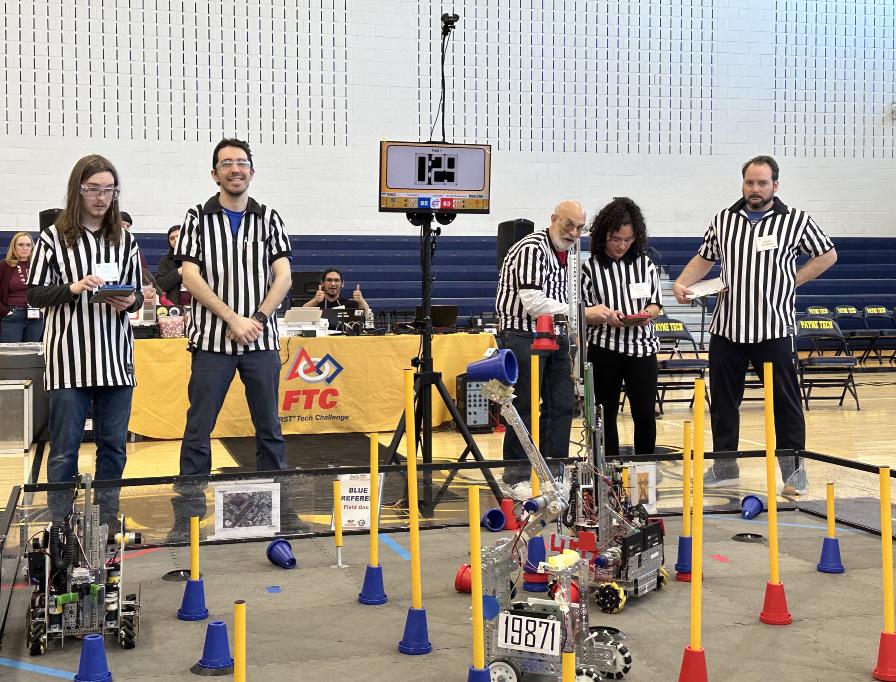
solved with Lego Mindstorm robots), FIRST Tech Challenge (FTC) for ages 12-18 (a mid-level robotics competition to build small robots to navigate a game field that changes every year), and FIRST Robotics Challenge (FRC) for ages 14-18 (high school level robotics with heavy encouragement for the development of real-world engineering skills).
Oyales is also part of the national service fraternity Alpha Phi Omega (APO), which has been involved with FTC events around New Jersey, including towns such as Morristown, Glen Rock, and Newark. APO volunteers also served as judges for the event, where they directly interviewed teams and determined which teams earned certain awards recognizing achievement in engineering, innovation, design, community outreach, and more. Oyales mentions how “the most exciting part of all these events was being an active part of these
younger students participating in the event. FIRST events are full of energy as teams cheer for their robot and the awards they earn at the end of the event.”
How can one be a part of FIRST Robotics? According to Oyales, participating in FIRST itself requires having been a student in a team prior to college. As Stevens is a college that focuses on STEM fields including robotics, many current Stevens students are FIRST alumni and have participated in either FLL, FTC, FRC, or perhaps all three during their time in school. Students at Stevens can continue to be involved with FIRST through volunteer efforts, either by directly volunteering at events or becoming a team mentor. For information on how to be involved in FIRST Robotics, Oyales is an FRC Team 11 alum, and APO brother and FTC alum Elsa Moroney is a team mentor for two local teams in Hoboken: Robotic Llamas and Roboken.
RHA attends regional business conference
GRAD CONTINUED FROM PAGE 1
BY EVAN PAPAGEORGE, STAFF WRITERAs part of their growing effort to improve Stevens living, Stevens’ Residential Housing Association (RHA) recently sent a delegation to the Central Atlantic Affiliation College and University Residential Housing (CAACURH) Regional Business Conference to learn more about other RHA chapters from around the region.
The best part of living on campus is that, living on campus. It is the job of RHA here on campus to make living on campus more enjoyable. Through event planning, communication across resident halls, and opportunities to meet those who live in your building, the RHA makes Stevens more enjoyable to live in. The RHA attendance at the business conference helped bring knowledge from the region to Stevens.
Over the weekend of February 24 to 26, three members of Stevens’s RHA, their President, National Communications Coordi-
nator (NCC), and NCC in training boarded a plane for the Ohio State University in Columbus, Ohio for CAACURH’s regional business conference. The weekend’s itinerary included boardroom meetings, socials, ceremonies, a banquet, and an indoor carnival.
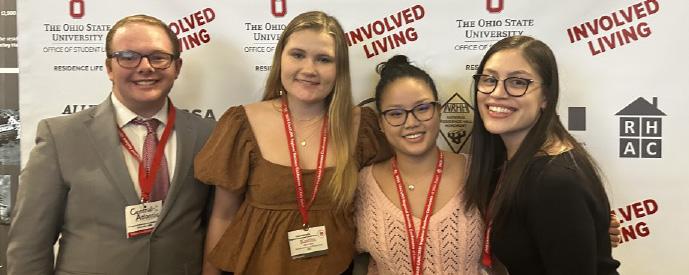
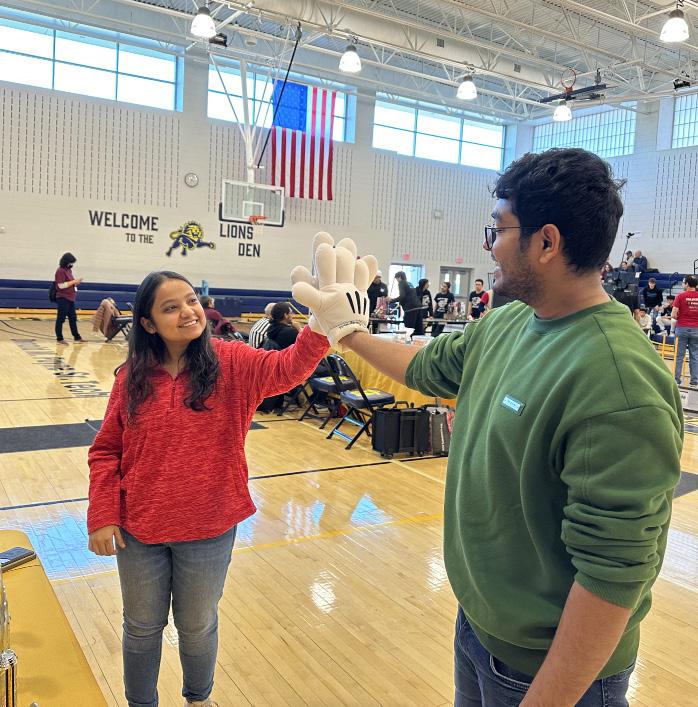
One of the more important aspects of the regional business conference is the boardroom meetings.
These are sessions where each school that attends the conference gets to discuss, propose, and vote on important decisions for RHA and National Residence Hall Honorary (NRHH) chapters across the region. The sessions followed parliamentary procedure (like that of a Model United Nations or United States Congress session) with different members of delegations acting as voting members, depending on the session. Voting matters included logistical aspects like host sites for future conferences, positions on the Regional Board of Directors, and awards like NCC, RHA president, and school of the year. In these boardroom sessions, the Stevens delegation represented
Stevens’ residential students when voting for policies and sponsoring the Stevens community for awards.
However, even though these voting sessions are essential to the functioning of CAACURH, one of the most beneficial aspects of Stevens’ attendance is learning about what other schools across the region do. From internal procedures, event ideas, and ways for students to get more involved, different schools all have unique ways of operating, and the regional business conference offers a space for everyone to share what they do at their institution.
Being involved on campus is one of the best ways to fully experience college life. RHA offers great opportunities for students to meet their peers and learn skills that will help them in the professional world. At the CAACURH regional business conference, Stevens’s RHA delegation learned about the successes of other schools and represented Stevens to schools from across the nation. RHA welcomes any interested members to join by reaching out to their hall councils.
cludes a breakdown of outcomes for women. The report begins with a general outcome summary. For the entire graduating class, 511, or 64.7%, will be beginning work in industry, 258, or 32.6%, will be furthering their education, and 21, or 2.7%, have not yet decided on what their next steps will be. Among those working, 43.8% will be hybrid, 15.6% fully remote, and the rest fully in-person. Additionally, the report shows the location of students’ jobs, with 71.1% being in the New York City metropolitan area. Companies hiring students range from Accenture to WSP in industries like finance, construction, manufacturing, and media and entertainment. For those continuing their education, 92% will be pursuing a master’s degree, while the rest will be attending medical or dental school, or pursuing a Ph.D. or another bachelor’s degree at various top-tier schools.
Following this breakdown, the report then analyzes the career outcomes for each of the major departments and majors. For engineering, 58% have secured jobs, 39% are continuing their education, and 3% are still figuring out the next steps in their plans. The top industries are Defense, Construction, and engineering services for an average salary of $78,300. The report offers even further analysis by listing the data for each of the majors like Biomedical, Civil, Electrical, and Mechanical Engineering.
The next category is the sciences, with 44% entering the working world, 56% continuing their edu-
cation, and 0% still seeking their next steps. The top employer is the medical industry and the average salary for the sciences is $66,000. The report then specifies the career outcome for individual majors like biology, chemistry, math, and physics. Next, the report analyzes the computer science disciplines, with 76% of students securing a job, 21% continuing education, and 3% still looking. The average computer salary is $103,000 with the top employers being in the technology and communications industry with a further breakdown into the computer science and cybersecurity majors.
The report continues into the school of business, where 74% of students have a job following graduation, 24% will be continuing in school, and 2% are still seeking. The average salary is $84,200 with the top employers being in the finances. The report continues to break down the statistics for each major like accounting, finance, and business and technology.
The final department listed is the arts, humanities, and social sciences. With 89% employed, 11% continuing in school, and 0% seeking a job. The average salary is $54,400 and top employers are in the media and entertainment industry.
The report finishes with a section offering statistics of the women graduates at Stevens, with 65% being employed, 34% continuing into higher education, and 1% seeking with the average salary being $79,000 with companies from the American Bureau of Shipping to Thorlab. The last pages of the report offer some student profiles and Stevens’s rankings.
DISABILITY AWARENESS MONTH
Accessibility and universal design on campus
BY KAYDEN CANNILLA, OPINION COLUMNISTAble-bodied people often don’t notice the impact of design in their everyday life, though limited mobility can clearly impact how a student experiences campus life. The Office of Disability Services works with students and parents to advocate on students’ behalf for facility changes around campus. The Stute spoke to Liam Rust, a sophomore computer science major who uses a wheelchair, to discuss his experience with accessibility at Stevens.
Rust reports that Stevens is altogether accessible, with every academic building having elevators and campus being easily navigable, although older buildings built before design standards and guidelines set in the Americans with Disabilities Act (ADA) in the ‘90s and 2010s are more difficult. Walker Gymnasium, and dorm buildings Palmer and Humphreys, are completely inaccessible, with Castle Point Hall being inaccessible except for the main floor. The UCC Residential Towers—the newest buildings on campus—are an improvement, though not perfect, with multiple elevators in main access points and options for ADA-compliant features in kitchenettes, as well as living areas.
Rust also comments that the pedestrian-friendly Hoboken is “a breath of fresh air to be able to get pretty much anywhere I’d like by just my chair, or the light rail. I am not able to drive a car, so coming from suburbia, where you need a car to get most places of interest, Hoboken is much more accessible.” Off-campus is much more varied than on-campus, with many entrances having steps to their doors “which is not a fun discovery to make when
you want to go somewhere with your friends and you find out you can’t join them.” This includes Frat Row, which is almost completely inaccessible. Rust, active in the a cappella group Floctaves and Stevens Linux User Group (SLUG), remarks that inaccessible Greek Life “doesn’t really affect me personally […] but it still does kind of suck knowing that I don’t even have [the] possibility of doing anything if I, or another person who was disabled, wanted to.”
As an innovation university, universal design should be of interest to all engineers. These are practices that benefit every user and don’t cause extra hassle for those who are requesting the accommodations. Buildings like EAS and Burchard are wheelchair accessible, though back entrances and wheelchair lift platforms leave something to be desired. Rust comments on universal design, saying, “Instead of special accessible back or side entrances, or having someone bring out a ramp when needed, a universally designed entrance would have the main entrance be accessible to all by default. This really makes a difference, because while the former might technically be accessible, it doesn’t really feel inclusive. You’re singled out.” This is also important to consider because bulky designs like winding ramps end up taking more space than a single, universally designed option. Even when an accessible design is considered, the placement of door openers and elevator button design can still be a limiting factor.
Another taxing aspect of disability is advocating for yourself, which Rust says “can be scary having to make your needs known, and asserting them if they’re pushed back against. I know how that feels, and, hon -
estly, it can get tiring. But, it’s important to remember that you aren’t asking for anything special. You’re just asking for what you need, as a person. No ‘special’ about it. Just human needs. And it’s alright to make that known, and to fight for them.”
When he encounters issues on campus, Rust contacts the Office of Disability Services, which is often able to quickly solve the problem. He noticed issues in Carnegie and Morton with a lack of door openers and elevator doors that closed quickly and found by the next week the recommended design changes had been implemented. Rust is well acquainted with ODS and recommends anyone in search of accommodations, “even if you don’t know what exactly you need, just talk to them!” They can be contacted via email (disabilityservices@stevens.edu) and by phone at 201-216-3748.
While Stevens is working to be a more accommodating campus, Phillip Gehman, Director of ODS, also hosts events to educate the community on effective ally behaviors that challenge ableism by providing insight into the perspectives of people living with a disability. On March 29, 2023, from 3:30 to 4:30 p.m., a student panel will gather in the UCC Gallery to discuss this topic. In April, ODS is honoring Autism Acceptance month by hosting Dr. Kelly Magro, a professional speaker, best-selling author, and autism entertainment consultant, who will speak to the Stevens community about his experiences growing up with autism. This event will take place on April 5 in Gateway 122 from 4 to 5 p.m.
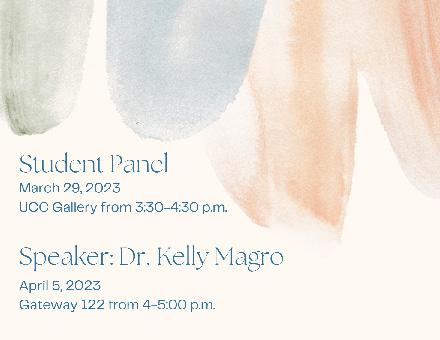
Keep an eye out for ODS’s events and opportunities to learn more about the disability community and the importance of accessibility.
YOU CAN BE A DISABILITY ALLY
BY OZ AGUINAGA, NEWS EDITORDid you know that March is Disability Awareness Month? It’s a time to shed light on the unique experiences of people with disabilities and promote inclusion. One of the most important things we can do during this month is to examine our own attitudes and behaviors toward those who live with disabilities. Are we unintentionally perpetuating harmful stereotypes or using ableist language? We will explore some of the ways we can show support and be allies.
We all know that people are more than just their abilities, so it’s important to not use labels that reduce others to a diagnosis. Instead, we should refer to individuals by their names and ask how they prefer to be addressed. No matter the terminology preferred by an individual with a disability, make sure to respect their decision and be conscious of your word choice.
Another issue that requires our attention is gaslighting. This is a serious form of manipulation that can make someone question their own reality. Unfortunately, people with disabilities are often targets of gaslighting, which can be especially damaging to those with intellectual or neurological disabilities. It is important that we listen instead of downplaying their experiences. It’s essential to listen to and respect people with disabilities. Individuals who communicate differently are often ignored or dismissed.
Now, we turn to ableist lan-
guage. This includes using disability as an insult, which can be incredibly harmful. We need to unlearn these terms and replace them with words that aren’t tied to a disability. Promoting positivity is far better than bringing each other down.
There is also the problem of infantilization. People with disabilities are often treated like children, even when they’re adults. This is a common occurrence as many well-intentioned individuals may attempt to make accommodations for a person with disabilities, but it can be deemed excessive, which can be disrespectful and humiliating. Let’s recognize that adults with disabilities have valuable life experiences and should be treated with the same respect as anyone else.
So, what can we do to be better allies to people with disabilities? We can start by examining our own biases and behaviors, listening to and respecting their experiences, and using language that promotes positivity and inclusion. Let’s make Disability Awareness Month a time to celebrate diversity and advocate for change.
Lastly, if you want to learn more, you can visit Disability Rights New Jersey, a non-profit that helps people with disabilities and their families. They make sure that people with disabilities are safe and treated fairly. They also provide legal help, check on places where people with disabilities get care, and give information and training.

INSTEAD, WE SHOULD REFER TO INDIVIDUALS BY THEIR NAMES AND ASK HOW THEY PREFER TO BE ADDRESSED.
NO MATTER THE TERMINOLOGY PREFERRED BY AN INDIVIDUAL WITH A DISABILITY, MAKE SURE TO RESPECT THEIR DECISION AND BE CONSCIOUS OF YOUR WORD CHOICE.
Stevens Softball in full swing, on three-game winning streak
BY CHARLES BEALL, OPINION COLUMNISTAfter a packed opening schedule of four double-headers in seven days, Stevens Softball is well into a rhythm for their 2023 season, posting a 5-3 record that includes sweeps of Hunter College and New York University (NYU). The team is now on a three-game winning streak after two hardfought losses in their opening season games against Ursinus College.
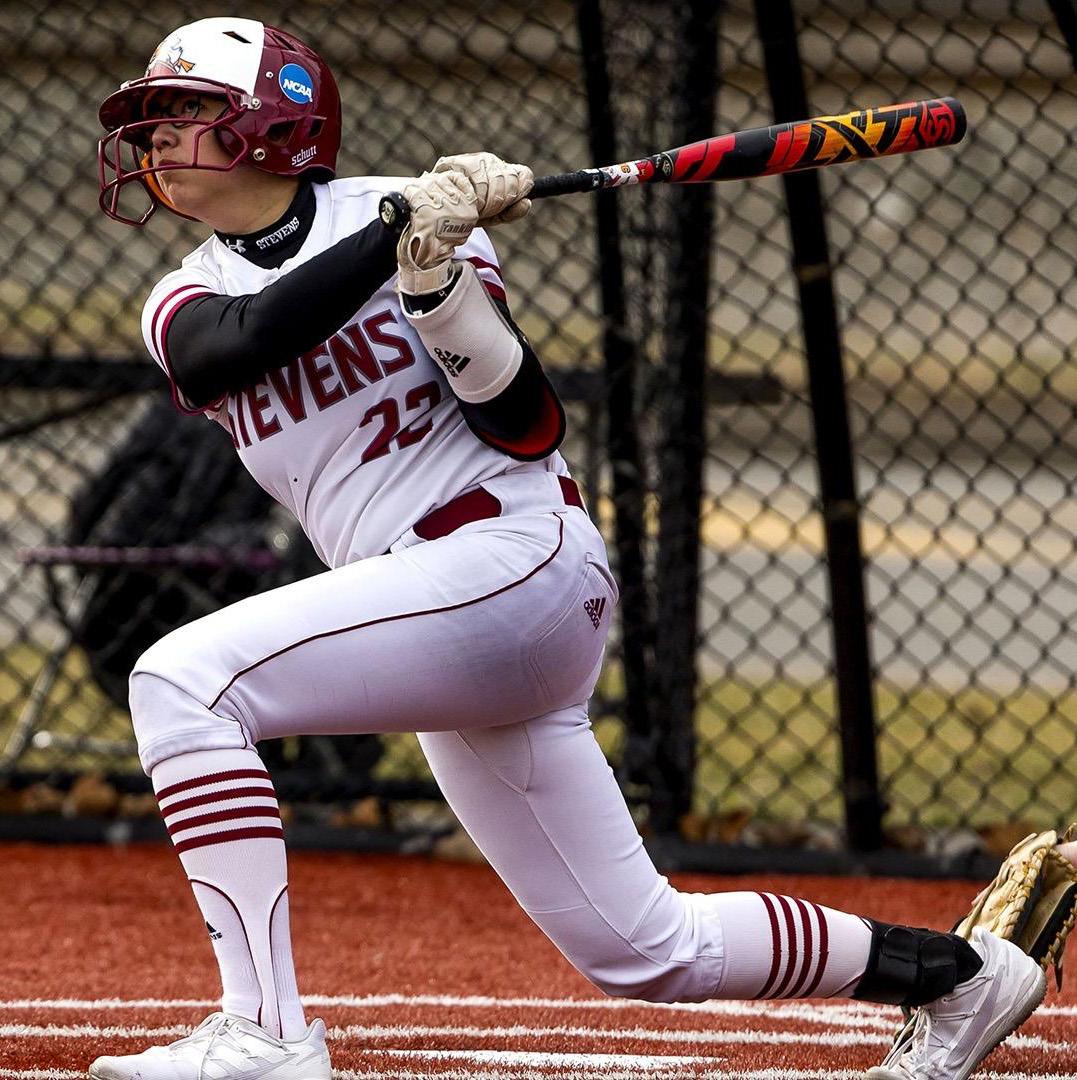
Despite the difficult start on the road, the team took lots of positives from the losses to improve for the upcoming games.
Junior infielder Jessica Guerrero, who is one of the team leaders in RBIs (7) and was named a MAC Player of the Week, noted how the team focused on offensive timing, “learning not just from our at-bats but from each other.” This focus paid off, as Stevens posted backto-back 9-1 victories in their next matchup against Hunter College.
The series against NYU showcased Stevens’ defensive abilities, as well as offensive deliveries in clutch moments. The second game was a 4-3 come-from-behind walk-off win, with senior
outfielder Olivia Warner, the other team leader in RBIs, drove in fifth-year outfielder Meg Halloran to complete the sweep. The first matchup was a 4-1 win against the rival from across the Hudson.
Senior starting pitcher Erin Kreis, posting a complete-game win against Hunter, an 8-inning performance in the only other loss of the season to William Paterson University, and five innings of shutout ball in a no-decision against NYU, harped on the team’s chemistry in the early days of the season.
“We have some tough opponents ahead of us,” Kreis stated, “but I think as long as we’re having fun and playing our game we will have a great season.”
The softball team also was undeterred by the water main crisis in Hoboken last week. Still holding practices where lots of bottles of water were provided, the players kept a positive mindset as they prepared for a busy week of games. Guerrero stated that the team “ had a goal/objective to accomplish” in practice to make adjustments after the losses, “and we did.”
The schedule for the team continued this week with a matchup
in South Jersey against Stockton University on March 8, followed by a trip to Myrtle Beach, SC on Saturday, March 11 to participate in the Fastpitch Dreams Spring Classic. Momentum is riding high for the team, as first-year catcher
Emily Wohlleber noted, “I believe we have an extremely tight bond, and that it will take us far into this season.” Indeed, Stevens softball looks to maintain its presence in MAC and beyond as a force to be reckoned with.
ON DECK IN SPORTS
FRI, MAR 10
MEN’S TENNIS vs Johns Hopkins University
WRESTLING
NCAA Division III Championship
WOMEN’S LACROSSE vs Springfield College
SAT, MAR 11
MEN’S AND WOMEN’S FENCING
NCAA Mid-Atlantic Regional Championship
SOFTBALL vs Fitchburg State College
WRESTLING
NCAA Division III Championship
BASEBALL vs Arcadia University
MEN’S VOLLEYBALL vs Hood College
WOMEN’S LACROSSE vs Wesleyan University
SOFTBALL vs Stevenson University
SUN, MAR 12
Women’s lacrosse opens season with strong 3-0 record
BY RUTHIE MULLISKY, SPORTS WRITERThe Women’s Lacrosse team started their season with a strong 3-0 record, including wins against Montclair State University (16-2) for their season opener on February 22, Kean University (20-4) on March 2, and most recently, Rowan University on March 4. The Ducks beat Rowan in a hard-fought victory for a final score of 12-11 at the Rowan Lacrosse and Soccer Complex in Glassboro, NJ. This is the second straight season that the team defeated Rowan.
The game was truly back-andforth between the two teams, with the leading team changing five times throughout the match. Sophomore Emily Smart was the first in the game to score by scoring an unassisted shot two minutes and 30 seconds into the game. Even though Rowan scored two goals almost back to back, fifth-year Camryn Rogers and senior Maddie Schmidt tied the game, with each team with three points to finish the first quarter. In the second quarter, Rogers dominated on the offensive side. She scored three goals in just over four minutes. Along with
Rogers, fifth-year Morgan Westerby added a goal for the Ducks to give the lead to Stevens. However, this lead did not last long, as the score at the end of the quarter had the Ducks down by one goal to Rowan’s eight.
The third quarter was Stevens’ most successful as compared to Rowan’s. Westerby scored two unassisted goals, and she also assisted another one of Rogers’ goals, leading to the Ducks ultimately scoring three goals while Rowan had zero in this quarter.
In the fourth quarter, sophomore Anna Velardi scored a goal two minutes and 15 seconds into the playing time, furthering the lead that Stevens had over Rowan to three. Again, this lead did not last long, as three minutes later Rowan scored another goal. With six minutes remaining in the quarter, another Rowan goal was scored, further shortening the gap between Stevens and Rowan to one goal. For the Ducks, Smart scored again with three minutes left, bringing the gap back to two goals, but eventually, Rowan scored with only 47 seconds left on the clock, bringing the game’s results to 12-11.
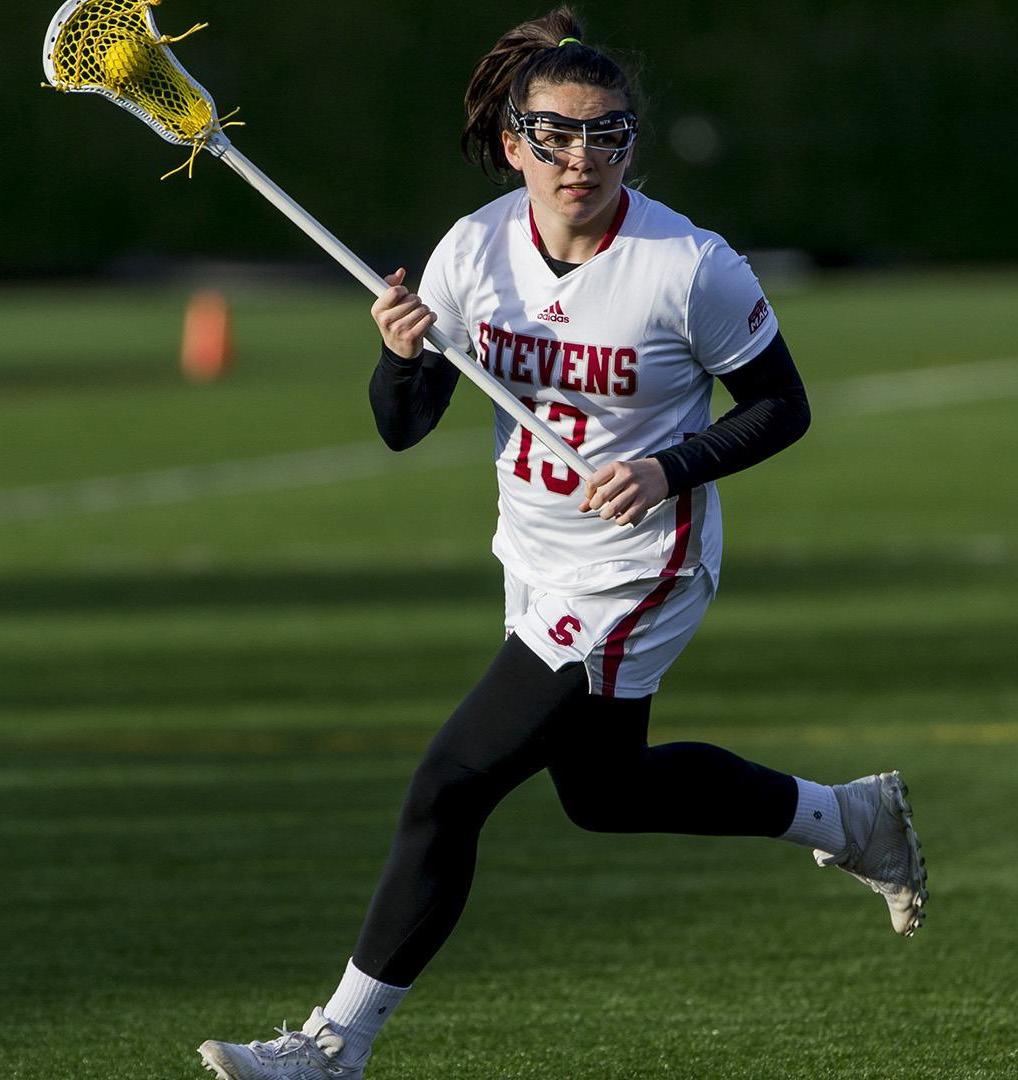
This game brought about some strong performances. Rog-
ers finished with an impressive five goals, Westerby tallied four points, Smart scored two goals, and Velardi and Schmidt each added one goal. Additionally, senior Julieann Murphy added an assist. Graduate student Lauren Cunniff started in the goal, mak-
ing 11 saves, causing one turnover, and stopping two ground balls. Additionally, the Ducks finished with a 14-13 advantage on draw controls, where Rogers and Westerby each had four, and first-year Stefanie Sellitto and senior Zoe Cook each added two.
STEVENS SCOREBOARD
SOFTBALL vs Plattsburgh State
BASEBALL vs Arcadia University
WOMEN’S LACROSSE vs St. Lawrence University
SOFTBALL vs SUNY Canton
MEN’S AND WOMEN’S TENNIS vs Occidental College
MON, MAR 13
WOMEN’S TENNIS vs Franklin & Marshall College
TUES, MAR 14
MEN’S AND WOMEN’S TENNIS vs Occidental College
BASEBALL vs Denison University
WED, MAR 15
SOFTBALL vs Washington University
BASEBALL vs Babson College
WOMEN’S LACROSSE vs University of Mary Washington
MEN’S LACROSSE vs Eastern University
NASA’s new picture release shows three galaxies about to collide
 BY SARA DEUIDICIBUS, SCIENCE WRITER
BY SARA DEUIDICIBUS, SCIENCE WRITER
A recent picture from NASA’s Hubble Space Telescope captured a striking image. In this image, it can be seen that three galaxies are on track to collide and merge together. The three galaxies are collectively named SDSSCGB 10189, and they are located in the Boötes constellation. While it is not uncommon for galaxies to collide, each of these three galaxies is in the process of making new stars, making the event rare. The galaxies are only 50,000 light-years apart from each other, which may seem like a far distance until it is noted that the nearest galaxy, Andromeda, to our Milky Way galaxy is over 2.5 million light-years away from the sun; it is only a matter of time before


these three galaxies collide and merge into one large galaxy. This discovery may lead to bigger implications in our understanding of space, as the collision may result in the creation of a Brightest Cluster Galaxy (BCG). BCGs can be formed in cases like this when gas-rich galaxies collide and merge, or when a larger galaxy merges with a smaller one. Each galaxy within a cluster is connected by a tangled structure of clumps and filaments of material formed by dark matter, so if this collision results in a BCG, scientists can potentially learn more about how this interconnection happens. Whether this development happens or not, though, it will be interesting to see how these galaxies behave from the comfort of our Milky Way — which is far away from its nearest neighbor.
Why don’t identical twins have the same fingerprints?
BY TANYA AVADIA, STAFF WRITERIdentical twins are known to share many features with each other. Having been born from one sperm and one egg that split once fertilized, identical twins go as far as having matching DNA. One of the rare things that each twin doesn’t share with the other, however, is their fingerprints. Human fingerprints are completely unique from person to person which makes them such an important identification tool. At the same time, this begs the question of how twins can have identical DNA structures but do not have the same fingerprints. A recent study conducted by Denis Headon, a geneticist at the University of Edinburgh, aims to explain why this is the case.
Like with some animals, humans develop their fingerprints early on. By the 13th week of gestation, the first indentations in the fingertips, known as primary ridges, start to form. There are three types of primary ridges: whorls, loops, and arches. Whorls are symmetrical and circular in shape, loops are longer, curved patterns, and arches are triangular ridges. An individual’s genes determine what combination of the primary ridges will their fingertips have but scientists have found that biochemical mechanisms can alter the ridges even if encoded a certain way in a person’s genes. This explains why identical twins who share the same DNA still have different fingerprints.
Headon and his colleagues were successful in identifying three families of signaling molecules that affect a person’s fin-
gerprints outside of their genetics. They did so by sequencing the RNA from the nuclei of human embryonic fingertip cells. This led to the discovery of three families of proteins that pass on instructions between cells in the fingertips: WNT, BMP, and EDAR. WNT and BMP work in opposite ways. WNT stimulates cell growth whi c h leads to more raised bumps on the skin whereas BMP suppresses cell growth which creates grooves. EDAR works independently and helps determine the size and spacing of the ridges. All three of these proteins play an important role together in the creation of each person’s unique fingertip but experts wanted to see the abilities of each protein individually. Since mice have ridge patterns too, the experts blocked one protein to see what would happen.
When the WNT pathway was blocked, there were no ridges on the mice. Knocking out the BMP pathway made the ridges wider. Lastly, in the case of there being no EDAR, the mice involved formed a polka dot pattern rather than stripes. This showed scientists that all three molecules must work together for the formation of ridges on human fingertips.
On top of the ridges, the actual fingerprints are subjective to the anatomy of the finger and the timing of the ridges. The scientists found that the primary ridges occur in three distinct locations: the center of the fetal finger’s soft raised pad, the end of the finger under the nail, and the crease at the joint where the finger bends. From there, the ridges grow outward. Headon describes this as, “waves […] each ridge serving to define the
position of the next one out.”
The finger’s anatomy now helps direct the finger’s cell growth. Pads that are large and symmetrical produce a whorl. Even larger and asymmetrical pads produce loops. If ridges fail to form or form late, it will result in an arch.
Circling back to the topic of identical twins, it is now evident through this study why despite having identical genetics, each twin processes their own unique fingerprint. This study not only answers this but also additionally lets scientists learn that the three molecular families—WNT, BMP, and EDAR— are also responsible for the growth of hair follicles elsewhere in the body. The reason why hair follicles are not present on the fingertips is because the formation of follicles halts pretty early on in the developmental process.
Largest known flower preserved in amber
 BY ERIN MCGEE, SCIENCE EDITOR
BY ERIN MCGEE, SCIENCE EDITOR
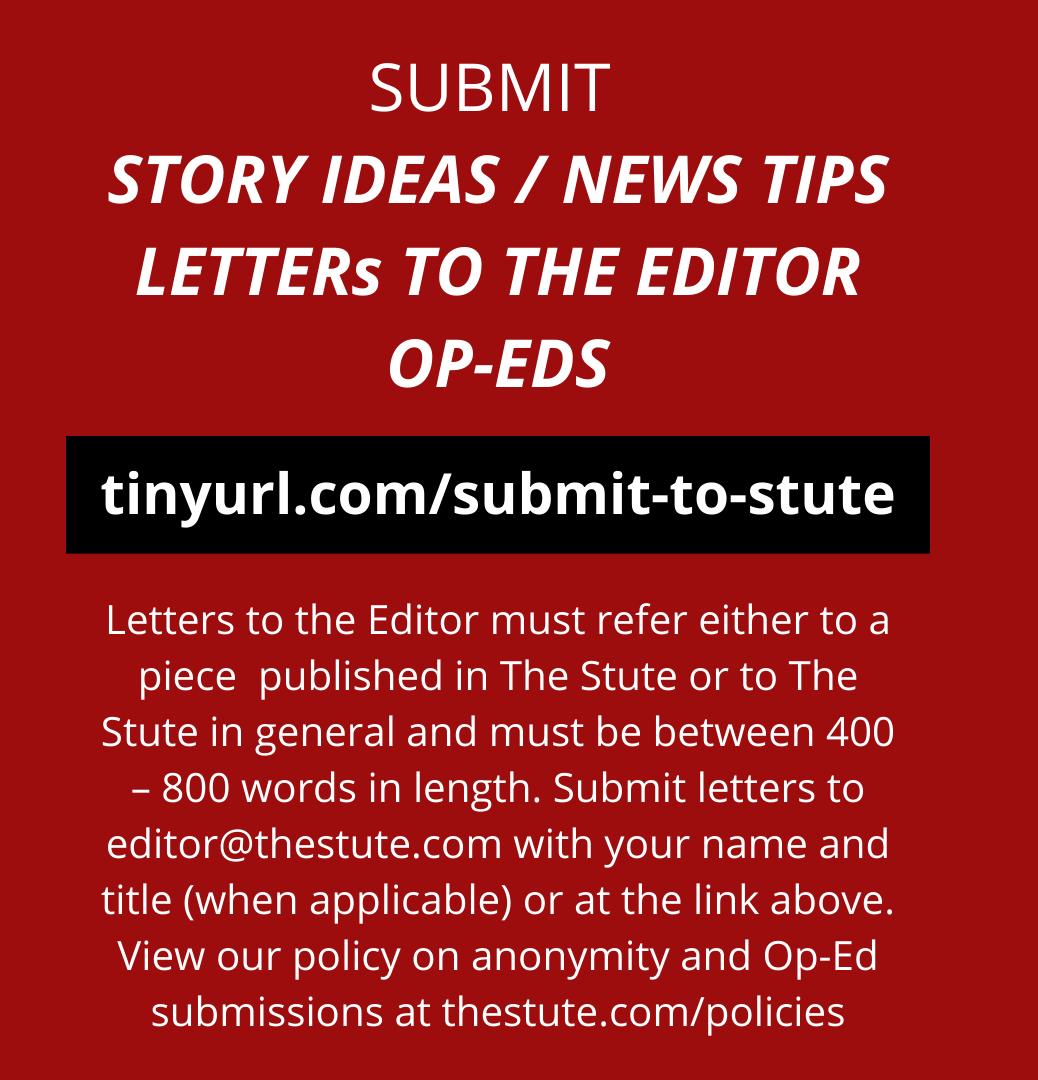
It seems like something right out of Jurassic Park: finding a prehistoric creature preserved in amber that can provide us with essential information about Earth’s biological history. Fortunately, this find is not science fiction. Researchers have recently started studying specimen X4088: the largest known prehistoric flower to ever be found, perfectly preserved in amber. This flower has a fascinating history itself. Its story starts near the Baltic Sea, in what is now Russia, sometime during the Eocene epoch. Botanically, this time period is considered the dawn of what we would know as modern plants. Sometime between 34 and 38 million years ago a large, five-petaled flower, fell from a large evergreen tree known as Stewartia kowalewskii and came in contact with a sticky resin, most likely from a conifer tree. There it was solidified, and preserved for millions of years to come.
Flash forward to 1872 and X4088 was discovered by humans, deep inside a Russian mine. The flower was interpreted as a pleasant example of preservation in tree resin, yet it was not studied by paleontologists at the time.
For 150 years after its discov-
ery, the flower sat at the Federal Institute for Geosciences and Natural Resources in Germany, largely forgotten. That was until the flower caught the eye of researcher Eva-Maria Sadowski, a paleontologist in Germany. Sadowski looked at the specimen under a scanning electron microscope, in order to get a closer look. What she found was pollen, millions of years old, encased in the amber as well.
After studying the pollen further Sadowski and her team found that it was in fact misidentified. The flower was from a different genus entirely and is more closely related to specimens found in China and Japan today. They renamed the fossil Symplocos kowalewskii, in their recent paper, published in Scientific Reports.
The study of this prehistoric pollen can actually provide more information on how our climate might continue to change today.
According to Regan Dunn, a paleontologist at the La Brea Tar Pits and Museum: “These tiny grains are natural recorders of past climates and ecosystems that can help us measure how much our planet has changed in the past due to natural [nonhuman] causes.”
This fossil has huge implications for paleontology, not only for its size but its history. X4088 shows the importance of revis -
iting fossils, even hundreds of years after they are discovered. According to many paleontologists, our understanding of the biological record, particularly as it relates to fauna and flora, is changing constantly, which requires us to continue to question
Using CS to improve disability technology
BY VICTORIA YASHCHUK, OPINION COLUMNISTProfessor Jonggi Hong is revolutionizing the world of technology using computer science-based research, working to create a world in which those who are disabled can navigate the world with ease and efficiency.
Ever since he was a kid, Professor Hong loved video games, ultimately leading him to develop a love for technology and programming - leading to his passion for computer science. Pursuing his love for programming, he discovered a new passion - helping those with dis -
abilities and using his skills and experience to create programs and innovations that safely and accurately guide those with blindness.
After graduating from the Korea Advanced Institute of Science and Technology, Professor Hong joined a research group at the University of Maryland to explore the problems hovering over the technologies and AI used to help the disabled community. The technology used by the disabled, including the blind and deaf, is precarious because they are prone to making mistakes (not being able to identify and analyze objects and surroundings). This adds to the hardships individuals in the
blind community experience, weakening the trust and dependency between the community and technology.
Professor Hong stresses the importance of his research and the comfort he strives to provide. According to Hong, technology aimed to help those with disabilities is created by individuals who will never fully encompass the difficulties of the blind community. A visually-able individual is not capable of understanding what it is like to be blind. Therefore, Professor Hong’s research aims to be inclusive and improve computer systems in a way that allows them to be more precise and helpful.
The technology Professor
what we think we know about the past. Says Ricardo Pérezde la Fuente, a paleobiologist at the Oxford University Museum of Natural History: “[the specimen] showcases the importance of revisiting fossils first studied decades ago.”
As research continues in this field, it is clear that we still have a lot to learn about prehistoric life. Paleontology as a whole continues to prove that reevaluating our past can provide more information about climate science in the future.
Hong is working to improve AI related to speech recognition, image recognition, and auto-translation that can be easily accessible to people with or without disabilities. The reduction of errors is crucial, as people with disabilities would not have difficulty navigating through and around errors.
When Professor Hong joined the Stevens team, he saw it as an opportunity to expand and advance his research, which included computer vision and AI systems that can be personalized and adapted to individual needs. The beauty of such innovations lies within the fact that such advanced technology can be personalized and programmed to
have details and characteristics suitable for its user only.


Professor Hong aims to create innovations where those in the disabled community can feel included and comfortable, without having to face difficulties. Because blindness impacts the way individuals live and perceive the world, they must have experiences that allow them to live life to the fullest, using high-accuracy technology such as computers, screens, watches, and more.
Professor Jonggi Hong continues to work on his research with the Stevens community, with the goal of including the blind community firsthand in his studies and research.
THE STUTE EDITORIAL
Signing off
For the last year of my life, I’ve wanted out of Hoboken, out of Stevens, out of this bubble of a square mile I’ve called home. Of course, I love Hoboken, Stevens, and the people I’ve surrounded myself with these past four years. Despite this, I’ve felt that I’ve outgrown the confines of this city. Hoboken has felt too easy; being here equates to comfort and exploring it no longer feels like a challenge.

On the flip side, it’s also felt like I’m running away from Hoboken with no destination. During my previous semester, I spent copious amounts of time “finding myself,” thinking about future goals, and coming to no concrete conclusions. Everything about my post-graduation life was unknown: (1) what will I do?; (2) where will I live?; (3) when will I figure it out? New questions stemmed from these questions, sprinkled with more philosophical debriefs like am I doing life right? I felt confused, but certain that graduating and leaving this square mile would solve everything. Amidst this chaos, something that always came to mind was a piece of advice my parents gave me: running away from Hoboken won’t answer these questions or make you happier.
The beginning of 2023 brought a change in mindset. I took a break from searching for the answers, and let them come to me. I stopped trying to run away and learned to be grateful for “easy Hoboken.”
I’ve felt myself revert back to being sappy about commencement and relishing in pre-graduation cliches. Despite not knowing all of the answers to my questions, I’m excited to start this next chapter of my life. And now with an acceptance to graduate school, slowly the puzzle pieces are falling into place and my life after Stevens has more clarity.
The sweet smell of spring seems near, and I’m being more intentional about how I spend my time; I’m scrambling to try all the restaurants in Hoboken and to check off all the items on my oddly detailed bucket list (still to do: head to Ikea on the ferry, attend a concert solo, check out Sweet Pickle Books, among others). Everything I do already feels nostalgic; it’s like I’m living in the future, watching myself go through the motions of my present life. My wistfulness only grows warmer with the weather. There are just moments, like the one right now where I’m writing this piece, just
MIND OF A FRESHMAN
sitting around with my friends, laptops open, music playing, candle wick burning. These are the moments I’ll miss the most. Hoboken is easy, but it will be hard to let go of.
There’s a beautiful melancholy that comes with reflecting, which I talk about a lot, especially about my time on The Stute. I joined The Stute as a first-year by the recommendation of my freshman year roommate. My first article was about the library’s 50th anniversary, and I still remembered how anxious I was to conduct that first interview with the kindest people working in Archives. I felt that same apprehension going into the positions of News Editor, Managing Editor, and eventually Editor in Chief. Around this time last year, I wrote my first editorial about how the first day jitters never stop, and that if they did, it was time to find a new challenge.
This is my last time writing The Stute Editorial. I’ve debated what I’ve wanted to write about for a while now, and I decided it would only be fitting to write about my lingering feelings about my life, Stevens, and The Stute. I map each year of my life at Stevens to my experience with The Stute, as
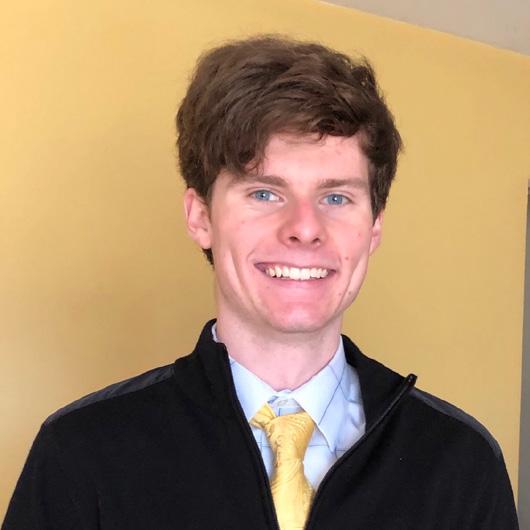

they are inseparable. I am incredibly grateful to this organization for giving me my “Stute-fam,” lifelong friends, and insurmountable opportunities to practice my writing and leadership skills. I will certainly miss having this outlet to share my thoughts with the Stevens community and comment on ideas important to students. The next E-board will bring a wonderful, new perspective to The Stute, and I’m beyond excited to see all that they accomplish.
More reflection: I’ve grown so much. My friends and family have grown so much. The Stute has grown so much. The people I see once every few weeks have grown. My plants have grown. The people I no longer talk to have grown. Nothing is the way that it was, and I couldn’t be happier to embrace these changes. I’ve made so many good decisions, stupid mistakes, and taken risks, just like everyone else. We’ve learned, laughed, sang, studied, cried, and felt about every conceivable emotion together, and it’s shaped our Stevens experience. I’m satisfied. I’m signing off from this position, no longer feeling those first day jitters. Must mean it’s time for that next challenge.
SENIORITIS
Sanjana Madhu ‘23 Editor-in-Chief BY TANISHKA KAPOOR ‘26Take a deeeep breath. Go ahead. Now let it go. Do that a couple more times. Now, it’s time for me to ruin your relaxation. Welcome to midterm season. It’s the second semester, and for some reason, it feels like there is so much more going on compared to the first one. With clubs, activities, and just life, it can be a lot to manage. While any logical person would ease up some burden by dropping out of a few activities, I struggle because I suffer from Never-Wanting-ToLet-Anything-Go Syndrome. It can be hard when you feel like you are giving up by detaching yourself from activities or situations that you think you committed to. So instead of listening to all the psychological and philosophical podcasts, you distract yourself from reality and drown yourself in work. (Maybe there is an underlying problem here).
It is easier for first-year students to get carried away with extracurriculars and academics because we don’t really have internship opportunities or programs that we need to focus on. So what else do we do in our free time? (Is the concept of having “free time” only applicable to business majors?) For me, that time is filled up with overthinking which eventually leads me to start panicking about what I am going to do with my career. And don’t even get me started on fluctuating emotions because of relationships. So, instead of taking a deep dive into my feelings and thoughts, I tend to fill them up with work. At around midterms though, the threshold starts to wither, but I have come up with a few tricks to help me that might help you too.
First, create a schedule. Sit down for about 10-15 minutes and lay out everything you need to accomplish with due dates next to each item. Then prioritize each task based on those due dates. This way, you can get everything that is due sooner done first. The key part of creating a list comes when you finish each task. Humans tend to get a small dopamine boost when we finish something and having the satisfaction of checking off or crossing
out each completed task accentuates that.
Second, listen to Nike and just do it. The hardest part of every task is to actually get started. Once you do though, you don’t want to stop until you finish it. This thought is probably the most challenging of any writing process. If you are struggling, I suggest starting with an outline. Outlines aren’t as daunting as writing an essay, but once you have that, it’s easy to start typing words.
Lastly, breathe. I feel like we tend to take our breathing for granted. As weird as that sounds, breathing has a tremendous effect on how we feel and our emotions.
So, if you are feeling anxious or overwhelmed, take a deep breath and tell yourself “all is well” (if you get the reference, I am proud). Take a few minutes to close your eyes and simply focus on your deep breaths. This will help ease any tension and allow you to start working again with a fresh mind. While I have yet to learn how to completely let go of things, it is definitely something I am working on. Learning how to be okay with prioritizing your mental well-being and freeing yourself from situations can be liberating, which is something I believe a lot of first-years need.
BY CHARLES BEALL ‘22This past week saw another disruption to the norm as Stevens closed campus and students were sent home. There were some eerie similarities between the water main fiasco and the first days of the COVID-19 pandemic three springs ago. As I walked to fill a jug of water for toilet flushing last Tuesday morning from a fire department truck, I thought to myself: “well, it’ll be a good story to tell.”
The class of 2023 has experienced its fair share of crazy times while at Stevens. We came to a campus still recovering from a cyberattack, where sign-in, class registration, and many other aspects of orientation were without much of the tech we were used to. In March 2020, we all rushed home, first thinking we’d come back in two weeks, and then Fall 2020, and then Spring
Yeah, we’re writing about water mains
BY OFF CENTER
- Satire -
Off the Press is known for its journalistic prowess, so we would be remiss not to pen our perspective on local water situations. A lot of people missed it, but last week on Monday, a big water pipe broke and threw the whole city into chaos. Stevens told everyone they could go home and put classes online to entice them to not pay attention either. They unlocked the emergency porta-potty stash (but didn’t use the entire thing) and told everyone the water needed to be all
hot and bubbly for a minute before they could drink it.
But let’s talk about pipes. Due to the unfortunate tendency of water to be a liquid, we can’t just pour it onto the roads and hope it goes where we want it to, so we have to contain it in big long cylinders and pressurize it with pumps or gravity to get it moving. The pressure also serves to keep illegal things like bacteria and weird icky particles out of the water stream. The water in the pipes also doesn’t all move at the same speed, generally water closer to the center moves faster and, due to
the no-slip condition, water on the edges doesn’t really move at all. But since the water has all the pressure, it likes to explode when there’s a hole in the pipe. Now the science here is pretty complicated. A contractor accidentally made a hole in the pipe, and then the pressurized water exploded out, causing a big mess.
Off the Press was one of the first to hear about this situation when the water in our headquarters stopped working. We immediately put together that the PSE&G contractor was doing work in the area of a big water main
and must have broken it, so we headed down there right away. Unfortunately, the water got all our notebooks wet so we lost our notes. We can say there was definitely water everywhere. Some people were even taking pictures of the pipe.
But what’s a Stevens student to do about this situation? Isn’t it the city’s job to work with the contractors to figure out the aftermath of the great pipe burst and make sure it doesn’t happen again? Or at least for a few weeks. Yes, it is. And they’ll do that. We hope. But in the meantime, you can think
2021, before actually all getting back to campus at the start of junior year.
I remember too that when I moved into my apartment right before the Fall 2021 semester, Hoboken had flooded due to a tropical storm-hurricane combo. We experienced another water boil advisory at some point between then and now, and a brief stint of virtual classes in Spring 2022 due to another spike in COVID cases. In other news, our time at Stevens saw an attempted insurrection at the U.S. Capitol, the outbreak of war in Ukraine, and the rise of the Taliban to power in Afghanistan, among many other shocking world events.
In short, my class has seen its fair share of craziness during our years of undergrad. Of course, every class has claim to its defining moments of intense, stressful, or even straightup insane moments. But what’s important is that these experiences make our class unique, and I believe have brought us much closer together.
What’s more, we’ve met each insane moment with a newfound desire to upset the norm in a positive way. I remember the burst of energy felt upon returning to campus, and how that turned into the hosting
of many new large-scale events on campus; the dedicated efforts by the SGA and other student leaders to make positive change across all areas of Stevens; and impassioned drives to focus on mental health, sustainability, DEI, and many other issues amplified by the pandemic.
We do have many battle scars, but we’ve also learned a lot from the craziness around us, and still found the motivation to be our best selves. I hope that this is the legacy of my class after we graduate from Stevens and that of the many classes who’ve dealt with COVID at some point during their academic careers.
Lastly, we’ve come back to campus with running water again and should take a moment to realize how lucky we are. My co-columnist Trevor explained this so beautifully in the first of his Senioritis pieces last semester, but to reiterate — it is a privilege for all of us to have our basic needs almost always covered, along with the chance to study, learn, and grow at a college with incredible opportunities and even more incredible people. Even in the craziest of moments, recognizing this can give us immense comfort and gratitude.
about fluid flow in pipes for a while. I mean, we didn’t even get to what happens when the pipe isn’t circular. Or laminar and turbulent flow. Pipes are great. You can also drop off some water bottles off at your local Off the Press office (there’s only one). We’ll give you our business card and a sticker that says, “I gave OTP some water bottles and they gave me this sticker.” You can make another hole in another water main somewhere else and see what happens. For legal reasons we technically have to advise against doing that though. So if you do do it,
don’t tell them we suggested it. If you do it enough times you could really start doing some interesting statistical analysis.
If nothing else, let this article make you aware that designing and maintaining century-old water infrastructure is hard and this is why a bunch of people have jobs doing just that. It should also serve as a reminder that a lot of people need water for things, so we have to make sure we can get it for them.
Off the Press can’t build pipes but we can tell people who don’t know anything about them a few fun facts.
The art of wanting to manage everything
Another crazy time for the class of ‘23
SCIENTIFIC CURMUDGEON
So what’s the upside of my age-related troubles? Normally, I take my mind-body capacities for granted. I sleepwalk through life without being conscious of what I’m doing. I’m guilty of what philosopher Daniel Dennett calls “competence without comprehension.”
BY JOHN HORGAN CAL PROFESSORI’m trying to see the upside of aging, but sometimes it’s hard. Last fall I was jogging along the Hudson River, near my apartment building in Hoboken, when I tripped and fell. I needed stitches in my forehead, which bounced off a metal railing on my way down, and in the back of my head, which whacked the pavement.
I’m still not sure why I stumbled. I was probably glancing over my left shoulder to see if a speedier runner was passing me. That might have been the proximate cause. The ultimate cause is that I’m 69, and my balance isn’t what it was. If I run forward while glancing backward, I’m liable to fall on my face.
Even before this episode, I was worried about my balance. For decades, I have played hockey on ponds in the Hudson Highlands, and for the last year or two I have felt less sure-footed on the ice. Also, if I get up in the middle of the night (as old guys are wont to do), I might wobble as I navigate the darkness.
A recent Washington Post article on balance problems among older adults notes that balance depends on three systems:
1, proprioceptors, which are neurons that lace our muscles and joints, telling them how to move to perform a given task; 2, the vestibular system, consisting of labyrinthine inner-ear structures that orient us in space; 3, vision.
Although there is lots of redundancy built into these systems, it’s a wonder, given their fantastical intricacy, that we can stand upright! The Washington Post author recommends exercising your balance systems by challenging or “perturbing” them. One exercise involves standing on one leg with your eyes closed. Easy, right? But when I try it, after a few seconds I feel disoriented and sway like a drunk.
As you age, it turns out, you rely more on vision to maintain your balance.
Ah, so that’s why I wobble when going to the bathroom at night or standing on one leg with eyes closed. When I’m losing my balance while standing on one leg, I hop and flail my arms to stay upright. This reaction seems counter-intuitive; you’d think that staying upright while flailing and hopping would be much harder than standing still, but of course standing still requires finer motor control. Meditation provides an analogy; the more I try to still my mind, the more it hops and flails.
ADVICE TO BROKE COLLEGE STUDENTS Financing

your dream job
BY HIMA THUMMALA ‘26Dennett is making the point that consciousness is overrated; most of the skills that get us through a typical day require little or no conscious supervision. In fact, we usually perform better when we do so unthinkingly.
Aging is forcing me to pay closer attention to my mind and body. How do I move through the world without falling on my face? Forget jogging or playing hockey. How do I do anything? How do I eat my morning yogurt without sticking the spoon in my eye, or walk from my apartment building to my office without getting lost or run over by a truck? How do I type this sentence on my laptop?
Aging has heightened my awareness of my mind-body capacities. I certainly don’t comprehend how my visual, vestibular and proprioceptor systems work, at the neurocomputational level, but I no longer take the systems for granted. With increased awareness comes increased anxiety; I avoid glancing backward while moving forward now, because I fear falling on my face again. But I’m also thinking, as I descend into a subway station, say, or pace back and forth in a classroom talking to my students about the mindbody problem, How cool that I can do this!
The perturbations of old age eventually overwhelm us. My father, who died in 2020, was disabled by strokes for the last few years of his life. He needed a walker to move about, and he became increasingly confused. I often wondered, as he descended into dementia, if he had any sense of what he was losing: his ability to read The New York Times, to follow the plot of Homeland, to make small talk with his wife and grandchildren.
I’m determined, as my mind-body systems decline, to cherish them before they’re gone. I don’t want to rage, rage against the dying of the light. Rather, I want to pay attention to the dying of the light, even to delight in it, as if it were a lovely sunset. I do what I can to delay the inevitable. I try, at least once a day, to stand on one leg with my eyes closed, perhaps while chanting my favorite mantra: D’oh. My goal is not stillness; that’s too hard, and I’ll achieve it soon enough. My goal is to flail with style before my final fall.
John Horgan directs the Stevens Center for Science Writings. This article is adapted from one he published in “CrossCheck,” his free online journal.


What do you want to be when you grow up? I’m sure we all have distinct memories of being asked this question at least a dozen times throughout our lives, whether it was by our elementary school teacher, our parents, or maybe you have contemplated it yourself. Maybe you would get home from elementary school and add any loose change into your piggy bank to save up for your ideal profession. Whether you wanted to be an astronaut, a cook, an engineer, or you just had no idea, there was always a belief that you could do anything that you dreamed of. Un -
fortunately, the older we get, the more we start to be “realistic” about the factors that go into obtaining the job we want, one of the biggest ones being the costs. Although, it is important to realize that you can achieve your goals even if you don’t already have the finances to do so, as you do not need to follow a conventional path. One of the main reasons that people don’t have the money to pursue their careers, excluding other circumstances, is that they do not start saving early enough. This could be because of the lack of knowledge of what you want to do with your life because let’s admit it, most people don’t even get the faintest idea of what they want to pursue until they get to at least high school/college. But if you are in this situation, it would not hurt to start saving at an early age so you have money that you can put towards any further necessary education for when you do figure it out. And if you never come to a specific conclusion, or
NOT FINANCIAL TIMES (NFT)
if you do not end up needing the savings, you get the bonus of having extra money to save or spend. On the other hand, if you do know what you want to be, you should start planning your potential expenses as early as possible. This would ideally be when you get to college, as the younger you are, the more prone you are to changing your mind.
The process of saving up money for pursuing a career starts with identifying how much money needs to be spent on the education for it (if education is needed). For example, if you want to become a lawyer, you would need to research what universities to attend, what to major in, what exams you would need to take, etc. Next, you should make a chronological timeline of your path to achieve this goal which would show how much each step would cost and how you would obtain the money by the time it is needed. It is pivotal to acknowledge that the order of your plan does not need to be done in a tra-

Powell continues hawkish sentiment before Congress
to a 0.25 - 0.5% range. This was in response to heightened inflation (8.5% CPI March 2022) many associated with supply chain issues and ripple effects from the Russian invasion of Ukraine back in late February.
BY JOSEPH AMES ‘22On March 7th, Federal (Fed) Reserve Chairman Jerome (Jay) Powell testified before the US Senate Committee on Banking, Housing, and Urban Affairs.
Chairman Powell doubled down on his previously strong stance on inflation, committing the Fed to another rate hike for their March meeting, stating that the ultimate level of interest rates is “likely to be higher than previously anticipated”.
For reference, rate hikes began almost a year ago on March 17th, 2022, with a 25 Basis Point (25 BPS / 0.25%) hike to bring the Federal Funds Rate—the overnight borrowing rate—
The truth is, inflation falls on the two parties that have the largest role in managing our economy: Congress and the Fed. Beginning with Congress, it was much like handing a parent’s credit card to a child who is hungry in the middle of a candy store. Of course they’re going to buy absolutely everything they can fit into their arms and then some. In response to COVID, Congress allocated a whopping $5.2 trillion overall, equating to about 82% of the 2022 Congressional budget.
Of that $5.2 trillion, $1tTrillion was allocated to unemployment, which may seem justified considering that 14.7% of the workforce was considered unemployed during the month of April 2020, but about $400 billion of that was allocated after November 2020,
ditional order as everyone can achieve their goal in a different way than someone else did. For example, you can pursue a career at a different age than what is more commonly done, you can get a side job to pay for current expenses, or you can take time off for personal reasons. Just make sure to possess the characteristics of originality and resilience to be successful in our society’s professional world.
In reality, people often face many different challenges which obstruct their path or even rob them of the chance to pursue what they have always wanted. Keeping this in mind, if what is holding you back is the potential money you may need to spend to reach your goals, find out different ways that you can start saving today. If you eventually reach your funding goal for your education and career finances, all the spending temptations you resisted and the hard work you put in will reward you with your dream career.
when unemployment was a reasonable 6.7% — not far off from the Fed’s target level of around 5.5%.
Additionally, in that same timeline, the government passed almost $800 billion in direct payments to individuals, which is another clear over-allocation considering that unemployment was drastically falling and the stock market had just returned 14.2% in Q4 of 2020.
Stepping away from Congress and focusing on the Fed, whose job it is to manage inflation, we can see that they were far too late to act and were too timid in their initial actions as well. By October 2021, unemployment had fallen to 4.5% below their target level and inflation came in at 6.2%.
The thought at the time as inflation was transitory (temporary), but I believe that the initial wave of inflation was not transitory and should have been acted upon sooner as the cost of borrowing remained at essentially 0 for almost 5 months following November. The Fed could have
chosen to act swiftly and root out the non-transitory inflation with a 50-75-75 progression from March to June.
This would have brought the Funds Rate to around 2-2.5% in June as opposed to July. This absolutely would have affected the markets—which hit an initial low-point after the June rate hike—but it would likely have prevented the bottom out that the September rate hike led to and allowed the Fed to accurately assess if the inflation at play was indeed transitory due to supply chain and confounding issues that would eventually self-correct.
Instead, here we are with the potential for the Fed Funds rate to have increased by as much as 5.5% over the course of just one year.
Stay on the lookout for February’s CPI data to release on March 14th. Those wishing to read Chairman Powell’s full testimony may do so at https://www.federalreserve.gov/newsevents/testimony/powell20230307a. htm.
The upside of getting old and falling on your face
MUSIC TO MY EARS
Comfort albums and mindless listening
BY KAYDEN CANNILLA ‘24Happy midterm season. To celebrate, here’s a collection of my scattered reflections on what draws me to an album and to music in general. I love the familiar comfort of a cohesive voice and style and the way an album can be a complete storytelling ex-
SPOILER ALERT
perience. There are a few characteristics of an album that keep me coming back to it. I want variety so that I can have a good build and emotional journey, similar to the elements of plot in fiction writing. An album shouldn’t feel like a playlist, that is to say, I more often organize playlists to set one specific tone and every song contributes to that vibe. In an album, I love a structure that tells different elements of a story, rising with a central theme.
The length of the album is crucial, the sweet spot for me is ±13 songs; too much longer and songs start to fade into the background, shorter and I don’t feel like I get enough of the
story. I think of albums like Avril Lavigne’s Let Go and Under My Skin, Ezra Furman’s Perpetual Motion People, and My Chemical Romance’s The Black Parade, which all have 13 songs (excluding the bonus track on The Black Parade).

I’m particularly biased towards albums that tie songs together, having one lead perfectly into another, like “The End” into “Dead!” on My Chemical Romance’s The Black Parade. Continuity across songs always gets me, like how on Bury Me at Makeout Creek Mitski says she wants “a love that falls as fast a body from a balcony” in “Townie,” and then in the next song she says “One word from you and I would
jump off of this ledge I’m on.”
In order to appreciate an album as the art it is, I try to avoid turning it into background noise. There is a distinction between putting on music to enjoy it and putting it on to avoid silence: an aspect of devaluing the work to ascribe it as background noise. To me, music has a scale of active engagement, where listening to live performance is the most engaging and white noise study music is the least. I like the idea of a way to mindfully listen to recorded music, and one way I like to do this is through vinyl. Please don’t mistake me, I’m no audiophile. I’m referring to
Cocaine Bear, a spring break must-see


how entertaining it is
BY COLE GARDELLA ‘24If you told me a few years ago that the first movie to be dedicated to the late Ray Liotta, the star of classic films such as Goodfellas and Field of Dreams, would be about the killing spree that a bear embarks on after ingesting cocaine, I probably wouldn’t have believed you. Yet, that is exactly what happened with the release of the simply titled Cocaine Bear. This movie has been getting a ton of social media buzz due to its extremely bizarre premise, which surprisingly is based on real events that occurred in the 1980s, although in reality, the bear died within minutes of ingesting the cocaine. The movie might not be accurate to the events that inspired it, but it more than makes up for that with
Directed by Elizabeth Banks, yes that Elizabeth Banks, Cocaine Bear follows the story of two drug dealers trying to locate their lost cocaine that was dropped from a plane the night before. On their search, they encounter the eponymous bear, and their mission quickly turns into one of survival. I would assume that most viewers, myself included, do not really care about any part of the movie that does not have the bear in it, and frankly, I feel like the filmmakers felt the same way. The characters are all in the movie to add to either the film’s star presence or its body count, and none of them truly stand out from one another. The comedy also falls flat at times, although that’s not to say there weren’t a few laugh-out-loud moments.
Despite the lack of developed characters or interesting subplots, the movie is still wildly entertaining, thanks almost entirely to the scenes with the bear. Those scenes are gory and over the top in the best way possible, and anyone who comes to the theater hoping to see a bear high on
cocaine do some ridiculous stuff will not be disappointed in the slightest. Cocaine Bear is one of those movies that knows its audience and doesn’t try to be anything

that it’s not. So, if you and your friends are looking for a movie to watch over spring break, I’d give Cocaine Bear a shot.
treating music as a mindful activity and not letting the choice be made for you.
On streaming services, you have an overload of choices and often end up listening to a lot of what the algorithm chooses for you. Picking from your own physical music library puts the choice in your hands and owning physical music allows you a collection of personal history. Spotify is a private company: they can remove artists’ music at any time and digital archives are lacking. When you listen to your library, you take the time to comb through albums, appreciating the album art and inserts, listening to one side and then getting the choice to listen
Comic Corner
HISTORY OF THE DUCKS
Lieb and the Navy Buildings: built and demolished for innovation
Athletic Complex to classes led by Frederick L. Pryor, who the navy commissioned as a lieutenant commander, Stevens helped the navy in the war efforts in any way they could. One lasting example is the construction of two buildings: the Navy Building and the Lieb Building.
BY EVAN PAPAGEORGE ‘26As the 20th century continued on, Stevens continued to grow. Quickly approaching its 50th anniversary, a certain global event played a key role in the next addition to the innovation university’s campus: World War I. During the war, the Stevens campus was used by numerous military branches, but the Navy in particular (a main launching point to Europe for the Navy was nearby, as seen by a commemorative stone down by Pier A near Lackawanna). From training on what is now the DeBaun (then Stevens)
LIFESTYLE HACKS
The United States joined World War I in December 1917. After three years of fighting, America joined in despite national skepticism caused by the isolationism movement (the belief that America is safe as long as it stays on this side of the Atlantic). However, once involved, the navy needed qualified and trained engineers who could be the innovators of the American military efforts. With its perfect access to New York Harbor, and therefore the Atlantic Ocean, and its reputation of producing innovative engineers, the navy enlisted Stevens as a training ground for navy engineers, designating it as the
Spring break

it.
BY ZOE HACK ‘24With the craziness of last week and the stress of midterms and exams this week, it’s crazy to think that spring break is right around the corner. I don’t know if everyone is in the same boat, but being home for almost a week due to the water main break made me want spring break even more than usual. I didn’t realize how much rest I needed and how I was always in “go-mode.” So with the anticipation leading up to spring break, I have created a guide to get the most out of your spring break:
1. First and foremost, you deserve this time to rest and recharge without having to worry about classes, tests, or other commitments. I know that it can be difficult to let yourself rest, but spring break really is the time for it. If you’re able, don’t set that alarm clock, or just go to bed early if you don’t have much else to do other than scroll on your phone for hours. Spend the extra time getting out of bed in the morning, and take that nap if you need
2. Try to maintain somewhat of a school mindset. Partially related, I have this completely irrational fear that I will wake up one day and just forget everything that I’ve ever learned in school — like I won’t be able to do addition or subtraction, or read, or pretty much anything, that the knowledge will all just leave my brain. If you in any capacity related to that fear, a lot of times, a “break” can seem scary and like it’s just asking your brain to forget. Believe me, I am not telling you to do work over spring break. Please don’t do work over spring break. But maybe every other day pick up your notebook and just remind yourself that the knowledge is in fact not leaving your brain.
3. Recharge and change things up. Now is the time, if any, to try to change your schedule around. Maybe for the rest of the semester, you’ll try doing laundry on Mondays instead of Fridays, or you’ll go on your run at night instead of in the morning with the daylight savings change. For me, I’ll be finally organizing my closet before going home (because I have literally not finished moving in. Yikes, embarrassing). I am also going to try to add some mindfulness activities to my daily or weekly schedule, which I’ll start adding in when I don’t have classes and then continue into the
DEAR CLAIRE AND ETHAN...
United States Naval Steam Engineering School. One of the first problems addressed: housing the sailors-to-be.
The first building built was the Lieb Building. The design of the building was typical for the era and for being a military facility — a simple rectangle footprint, brick walls, standard windows, and Ionique cornices. Located on the corner of 6th and Hudson Sts., the building was used as a dormitory for the navy recruits and was completed in early 1918. The other building commissioned by the navy was the Navy Building. Designed in the same style as the Lieb Building, it was also planned to be a dormitory but was finished after the war and went unused.
The ownership of both buildings was quickly transferred to Stevens following the end of the war. The Navy Building was converted into classrooms while the Lieb Building was used as a library for the school. Both buildings

remained an essential part of campus for decades. However, the Navy Building, in deteriorating condition, was demolished in the early 1980s, and replaced by a parking lot (which eventually was replaced with the Babbio Center). As for the Lieb Building,

it remained part of the Stevens campus for many years, serving as classrooms, other academic spaces, and even a museum of Stevens’s history.
However, the building was demolished in the late 2010s to make way for the controversial Gateway Academic
Center. The Navy buildings represent Stevens’s support for the Navy in World War I. Yet, their demolition reminds us of losing the past to prepare for the future — a reminder of the balance of innovation and remembering the past.
rest of the semester.
4. If you’re able, spend time with your family. My favorite part about any break from school is getting to see and spend time with my family. Even though I’m only an hour away from home, it is difficult to get there when I am always booked from Monday to Sunday every week. It’s super scary to think about, but these are going to be some of the last times that I get to spend a lot of free time with my family before I start working (sorry I know, very deep). I try to make a conscious effort when I’m home to play board games with my family so we are actually spending quality time together and not just all sitting in the same room on our phones together.
5. You can do cool things without going on an expensive trip! Please don’t think I am just telling you how to be productive during spring break — it’s also important that you have fun. As a broke college student myself, I am not going anywhere extravagant, but to have a good time, you don’t always need to break the bank. Going to a local park and taking a walk in the fresh air, visiting local historical sites, taking hometown trips with friends from school, and trying new restaurants are just a few ways that I’ll be spending my break without spending too much.
What do I do under a boil water order?
BY CLAIRE HANNAN ‘24Unfortunately, living in Hoboken comes with a few downsides. It’s a great city with thriving businesses and amazing opportunities, but the utilities leave something to be desired. For those new
to Stevens, I want you to know that last week’s water crisis, while severe, was not unique. Every year or so, Hoboken faces some kind of water-related problem usually resulting in a boil water order and a small campus emergency. Usually, boil water orders happen after a big storm that causes flooding so you’ll always have some kind of advanced warning.
I would recommend that whenever we get a flood warning, fill up a bucket for flushing the toilet and a jug of drinking water. While Stevens will always provide portable toilets and water bottles, preparing yourself

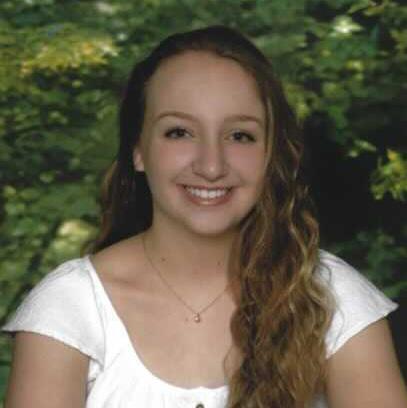
can make your experience just a little bit easier.
This is especially important to think about as we go into spring and rainstorms pick up. The recent damage to our pipes, combined with coming floods means that we should all be prepared for a boil water order. I would also recommend being careful with the water after a flood even when a boil water order is not in place. Historically, the city has been a little slow to identify problems with the water system. So, if your tap water is discolored or tastes funny, it’s better to be careful and have a little bit of safe water stored.
BY ETHAN KLESCHINSKY ‘24I feel like the answer you are looking for is in the question. So rather than helping you out for the future, I am going to use this as an opportunity to let you use context clues to learn. I

am going to take the rest of my time to share what I did during the most recent water main break and boil water advisory. To start off my journey, I spent my Monday evening irritated with my lack of access to water use on campus and proceeded to head home for a long weekend when the school advised that we evacuate on Tuesday. I then spent the rest of my week attending online classes and relaxing at home due to all on-campus activities being canceled. By the time water returned to normal, the week was basically over so I spent the weekend trying to catch
up on some much-needed rest. I watched Pitch Perfect during my time at home, and let me say boy can those Treblemakers sing. I 100% think they were robbed of the win at the ICCA Finals. So all in all, I would consider my time at home wellspent and much-needed. Back to your struggle, I’m sure you had a blast being unable to use water for the majority of the week but I just want to remind you that you should read what the city is telling you to do in times like this. I do not think my advice was needed for this one but you’re welcome anyway.
Cavern Maze
Stephen Pachucki - Off Center
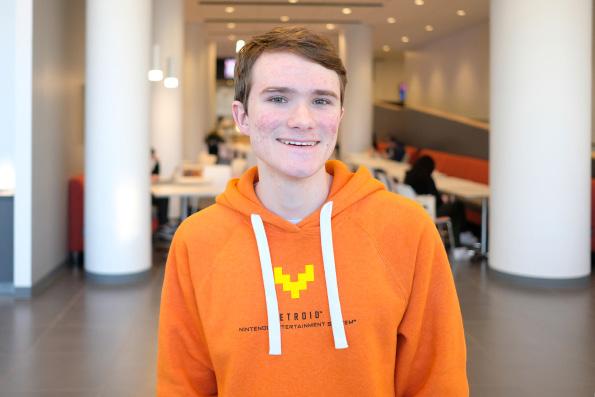
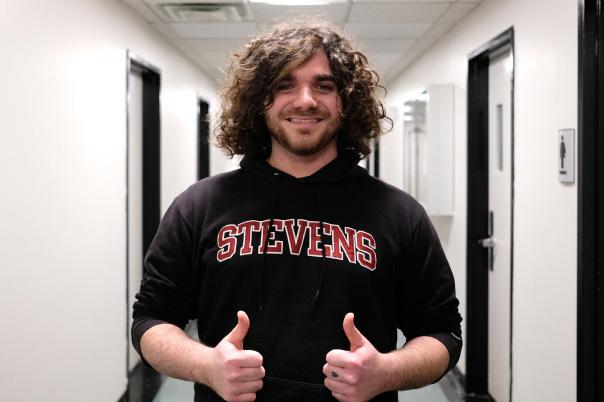


Oh no! You’ve gotten lost in a cavern with many twists and turns. Now, it’s up to you to find your way out.
In this puzzle, you have to figure out what to do on your own. Here are some clues to start you off:
• Start by solving the clues in the grid.

• See if you notice any patterns in the answers.
• If you get stuck, feel free to look anything up online.
• This puzzle is a maze. Your escape path starts in the top-left corner but doesn’t necessarily end in the bottom-right.
• You will know you have solved the puzzle when you end up with a twoword phrase (something you wish you had in the cave).
ROVING REPORTER

 By
By

LAST WEEK’S SUDOKU ANSWERS:




Medium

“Describe your last week in three words.”
Rafael Lee Li and Mia PetrolinoMeghan Halloran ‘23 “Kirkland Water Bottles.” Very Hard Puzzle: 0.87 difficulty
